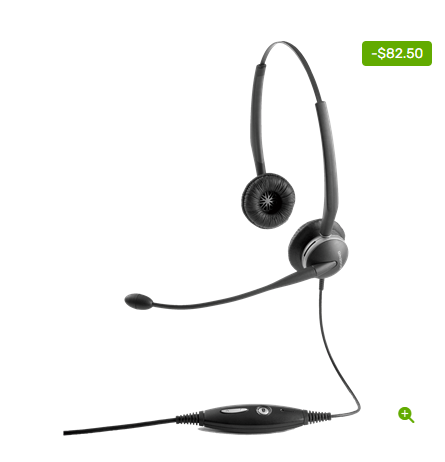Let’s face it-you probably didn’t think “headset buyer” would be a part of your job description when you started working remotely. But here you are, squinting at product specs, wondering if “ENC” is a disease or a feature (spoiler: it's Environmental Noise Cancellation).
So, how do you pick the right headset when the options feel infinite and everyone on Reddit seems to have a different opinion?
Let’s break it down-together.
Know Your Work Style First
Before you even click "Add to Cart," you’ve got to ask yourself: What do I actually need this headset for?
-
Are you constantly on Zoom calls?
-
Do you juggle between Slack huddles and Spotify playlists?
-
Or are you secretly gaming during lunch breaks (no judgment)?
If your day is filled with virtual meetings, microphone quality becomes top priority. For example, the jabra evolve 30 is often praised in LinkedIn groups and business tech forums for its crystal-clear mic and long battery life. One Reddit user even joked that it "makes me sound smarter than I am.”
If you're more of a solo worker who only occasionally hops on calls, you might care more about sound quality and comfort, like with the Sony WH-1000XM5—noise cancelling bliss, but admittedly overkill if you’re just taking calls from Dave in accounting.
Mic Matters More Than You Think
Here’s the truth: people will forgive bad video, but a crackly mic? That’s a fast track to “Can you repeat that?” purgatory.
Look for:
-
Boom mics (those little arms) for superior voice pickup.
-
Noise-cancelling mics if your dog insists on joining every meeting.
In a recent article on TechRadar, audio engineer Emily Underwood notes, “A dedicated mic arm dramatically improves voice quality—built-ins often sound tinny or far away.”
If you’re in a noisy household, this is non-negotiable. (Sorry, AirPods.)
Comfort Isn’t Optional
You’re wearing this thing for 6+ hours. If it hurts after 30 minutes, it’s not “a headset”—it’s a torture device.
Pro tip: Look for memory foam padding, adjustable headbands, and breathable materials.
Check online reviews for terms like:
-
“wearable all day”
-
“no pressure points”
-
“forgot I was even wearing it” (the holy grail)
Brands like EPOS, Logitech, and Poly tend to score high in this area. But try it if you can-what fits one head may not suit another.
Wired vs Wireless: The Eternal Debate
You might be tempted by the sleek, wire-free life. But hold up—do you want to worry about charging your headset mid-call?
-
Wireless headsets offer freedom to move (and grab snacks discreetly).
-
Wired headsets offer consistency. No dropped signals. No battery panic.
For most people working from a desk, USB wired headsets like the Logitech H390 do the job just fine. If you’re pacing around or switching between devices, go wireless.
Real talk: don’t be the person whose headset dies during a quarterly review. Your future self will thank you.
Compatibility Isn’t Always Plug-and-Play
Zoom, Teams, Slack, Google Meet… you probably use more platforms than you realize.
Make sure your headset is:
-
Compatible with your OS (macOS vs Windows vs Linux)
-
Certified for the platforms you use
-
Easy to switch between devices if needed
It’s not glamorous, but driver support and plug-and-play reliability save you from last-minute troubleshooting disasters.
AI Features and Trends: Hype or Helpful?
Some newer headsets come loaded with “AI-powered noise suppression,” “voice equalization,” or even “adaptive audio environments.”
Cool? Yes. Necessary? Maybe.
If you work in unpredictable sound environments, AI features can be useful. But for everyday tasks, you might be paying a premium for tech you won’t fully use.
Still, the industry is clearly moving toward smarter audio. Headsets like the Neat Bumblebee (yes, that’s real) use AI to isolate your voice like you’re in a studio—even if you’re in your kitchen with a blender going.
Final Thoughts: The Future Sounds... Better?
Headset tech is evolving fast. Expect smarter voice recognition, better noise isolation, and possibly even emotion-sensing mics (yep, that’s being researched).
But for now, choosing the right headset comes down to knowing how you work—and picking gear that complements, not complicates, your day.
So go ahead, make the choice. Your ears (and your teammates) will thank you.
And if all else fails? Just mute yourself and nod thoughtfully. It’s worked for years.



